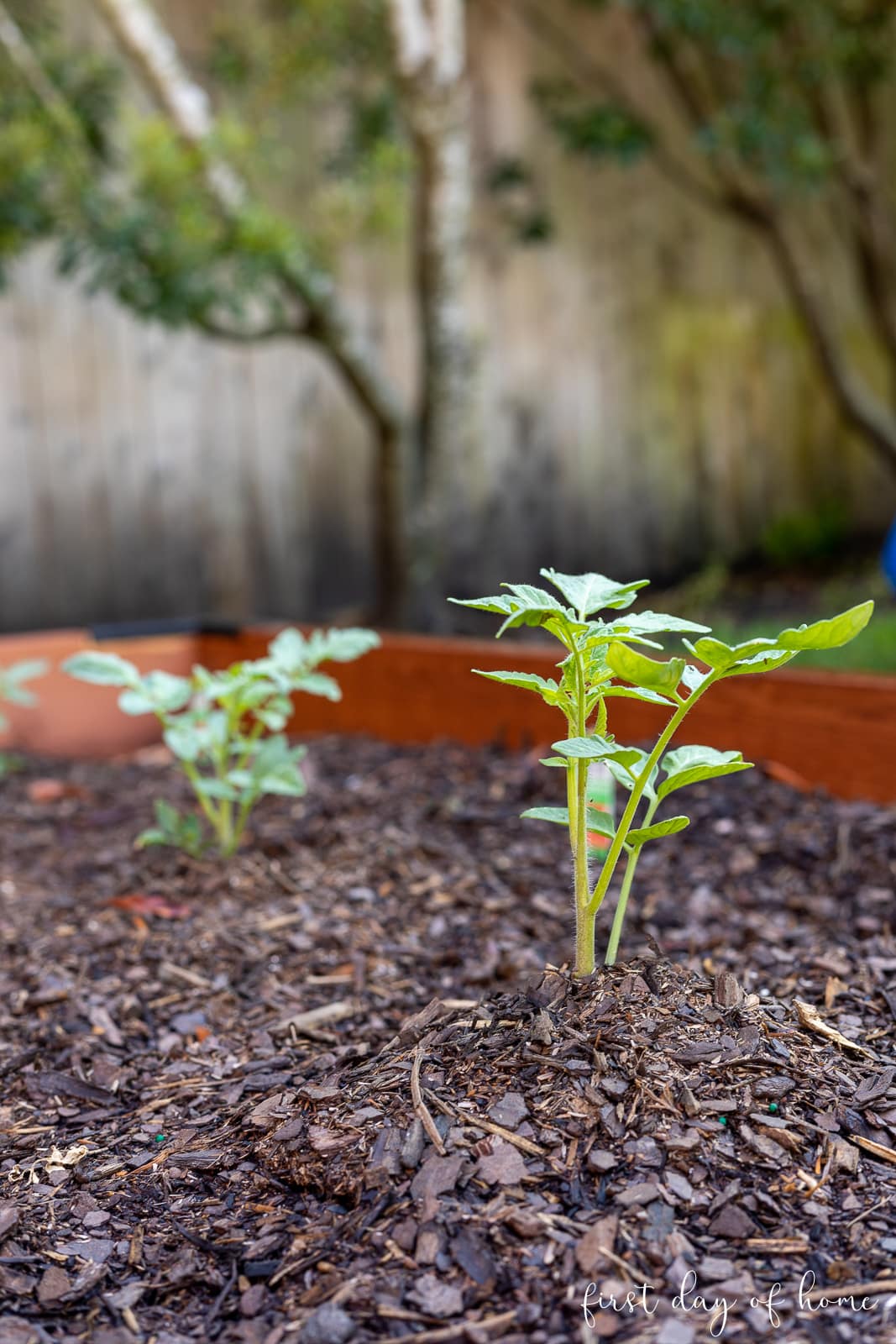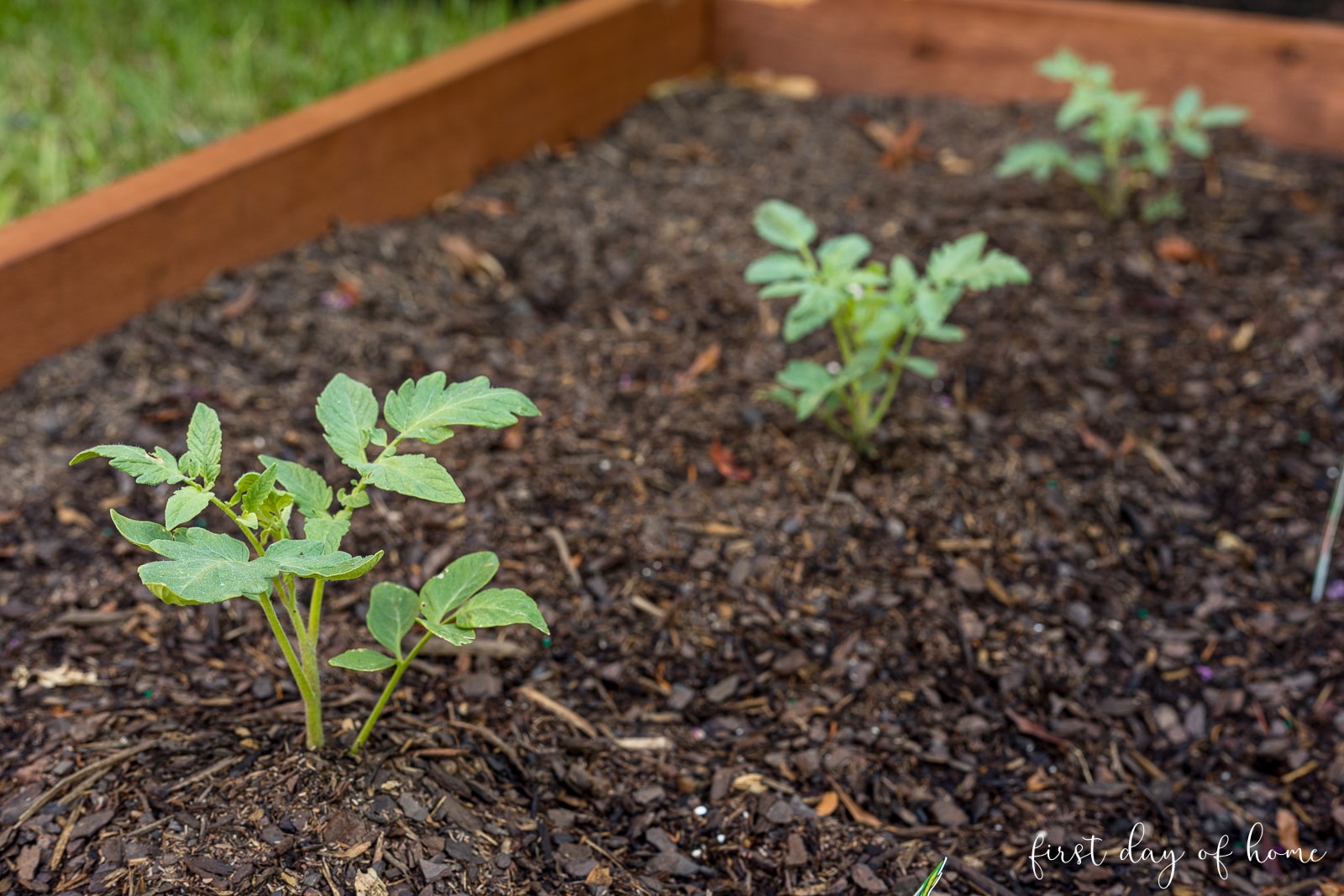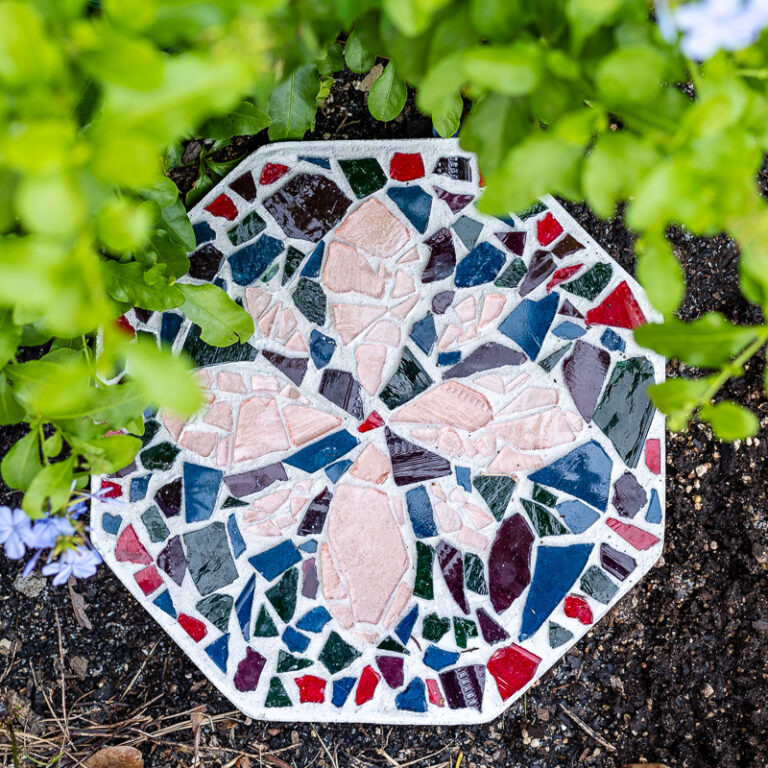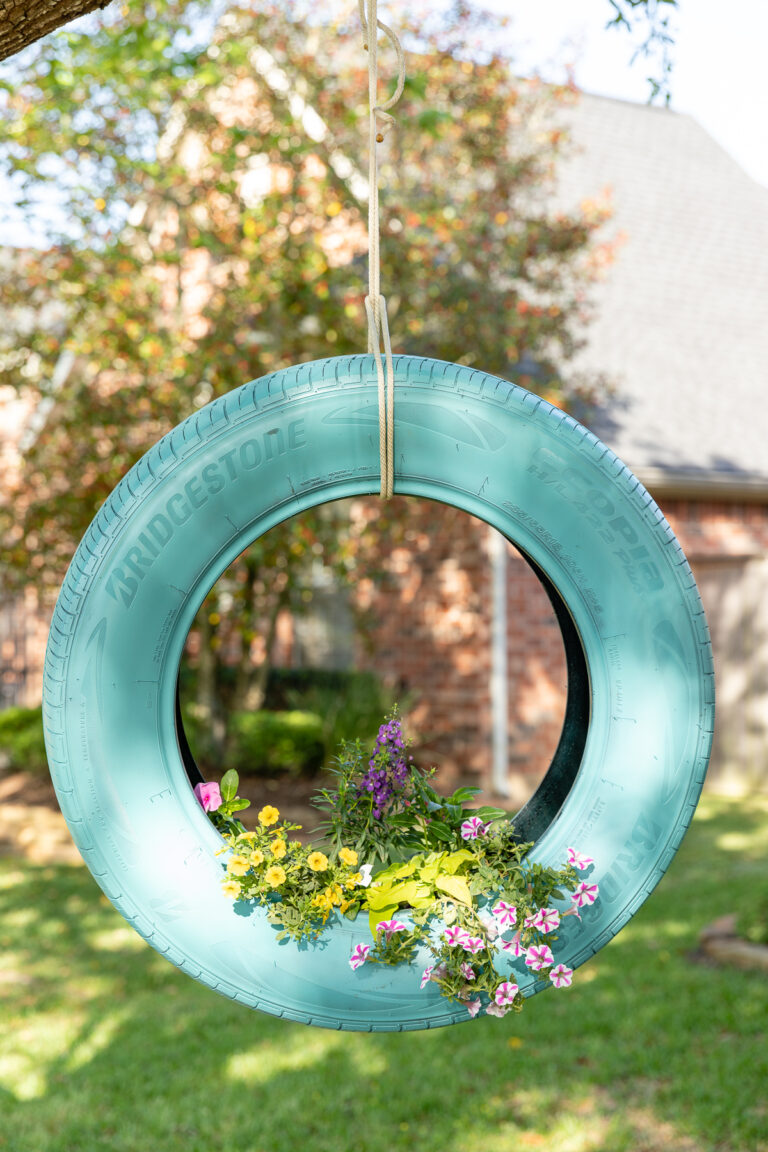Vegetable Gardening for Beginners: What You Need to Know
So you want to enjoy fresh veggies from the garden, but you don’t know where to begin? I’ve been there! That’s why I created this vegetable gardening for beginners guide. I’m going to remove the intimidation factor and bring you along for a real-life gardening journey. Green thumb, here we come!

This post contains affiliate links, and I will be compensated if you make a purchase after clicking on my links. For more information, please see my disclosures.
Beginner Vegetable Gardening: Quick Tips
With more families staying at home this year, there’s never been a more perfect time to start a home garden. The kids actually get excited about eating their vegetables, and the grown-ups can’t get enough Caprese salad. (Or is it just me?)

I’ve had great luck growing a spring and fall raised bed vegetable garden for the past several years. You can see the progress, from start to finish, in my Instagram gardening highlights.
Here are a few things to keep in mind before you get too far down the path:
- Don’t plant more than you can eat. Try to grow 5-7 veggies to feed your family and a few neighbors, not serve a whole buffet.
- Be aware of your watering and fertilizing needs. Like owning a pet, your plant babies will need routine care, especially immediately after sowing.
- Watch the calendar. You might find yourself between growing seasons, but you can still get your beds or containers ready to sow.
- Learn from your mistakes. Keep a journal so you can remember your gardening fails for next time.
Related post: DIY Tire Planter
Timing is Everything When Gardening
Pull out the calendar! Whether you’re planning a spring garden or a fall garden, there’s a prime time for planting vegetables in your region. It varies with each vegetable, too.

Here in Houston, Texas, I’ll plant tomatoes and peppers in March, along with green beans, cucumbers and melons. I still have onions in the ground and other herbs as well as a butterfly corner of the garden. In the summer, I’ll have a new crop of veggies to plant, including tomatoes, peppers, herbs, and cucumbers.
Related: How to Dry Herbs
Want to preserve herbs from the garden? Check out these four methods for drying them. Find out which technique works best for you.
If you want to find the perfect dates to plant vegetables in your area, The Old Farmer’s Almanac offers a useful planting calendar by zip code. The guide tells you exactly when to sow your seeds or seedlings either indoors or outdoors.
Before you go buying your vegetable seeds, however, you need to know exactly where you plan to sow them.
Container, In-Ground, or Raised Bed Vegetable Garden?
If you’re just starting out as a gardener, you may want to plant a container or in-ground garden. For the more committed beginner gardener, you can opt to build (or buy) a raised bed vegetable garden.
Container Gardens
Containers come in handy when you have limited space or want the convenience of moving your plants closer to your kitchen. Having a “mobile” garden also allows you to experiment with different locations to optimize sunlight.
Related post: How to paint terracotta pots
You can grow just about any vegetable or herb in a container garden with the exception of heavy/bulky ones like corn, giant squash, or pumpkins. The key is having a large enough container (with enough soil) to accommodate the full-grown plant. This is especially true for root vegetables like potatoes.
Container Garden Plants
Some varieties of tomatoes, peas, and salad greens are particularly good vegetables to grow in a container garden.
For soil, you can choose a potting mix that already includes the perfect formulation of organic matter and comes with a good pH balance.
| Pros of container gardens | Cons of container gardens |
|---|---|
| Great for small spaces | More watering needed |
| Affordable | Difficult to grow bigger varieties |
Shop My Favorite Containers
In-ground Gardens
In-ground gardens work well when you want to save on soil and stay within a budget.
If your ground is covered in grass, you can lay unwaxed cardboard, weed barrier, or newspaper on top, followed by 2-4 inches of compost.
You can then create a border using wood planks (preferably cypress, redwood, or cedar). Avoid using pressure-treated wood, as there’s debate about preservatives potentially leaching into the soil.
Once covered, the grass will die and you’ll have a plot ready to till in about 1-2 months. If your soil is compacted or lacks nutrients, you can “amend” it with a combination of organic matter such as compost, peat moss, or composted manure.
| Pros of in-ground gardens | Cons of in-ground gardens |
|---|---|
| More affordable | More weeding |
| Less watering required | Ergonomically challenging |
| Easier to grow large area | Harder to protect from some pests |
Raised Garden Beds
Having a raised garden bed requires a little more prep work and expense. If done right, however, you can create a “beginner garden” to last you through your expert years.
Raised beds warm quickly in the season, so you can plant earlier in the spring. The elevation off the ground also makes for easier weeding, planting and tilling.
Since you need to fill it with fresh garden soil and fertilizer, you can get the perfect nutrients for your vegetables and reduce the risk of pests.
I chose to create a series of raised bed gardens out of cedar because I think they’re beautiful and we have space for it. Plus, I wanted a fixed location where I could have my beds ready for every season.
| Pros of raised gardens | Cons of raised gardens |
|---|---|
| Better soil quality | More soil required |
| Drain well, warm quickly | More watering required |
| Visually pleasing | Higher upfront costs to build |
Shop My Favorite Raised Garden Beds
Picking the Right Location for a Vegetable Garden
Sun and wind exposure
When choosing the perfect spot for your beginner vegetable garden, you must prioritize sun exposure. Most vegetables will need at least 6-8 hours of direct sunlight.
In terms of direction, South-facing gardens tend to get the most sunlight in the Northern hemisphere. Ideally, you’ll place your garden with rows pointing north and south if you have a mix of plant heights. Make sure taller veggies don’t cast shade on the shorter ones in this orientation.
If you’re planting similar varieties, you may choose to organize east and west to provide equal sun exposure.
You’ll also want to avoid areas with high winds that might uproot or disturb your vegetables.
Irrigation
You should choose a spot that drains well since soggy soil can lead to root rot. Not a good thing! On the flip side, you’ll need to have a garden hose nearby or make plans to have a routine watering system.

Many expert gardeners favor drip irrigation which waters plants on the soil in a controlled manner.
Be careful if watering overhead since some vegetables (tomatoes, cucumbers, squashes) need dry leaves to prevent bacterial and fungal infections.
Also, avoid watering inconsistently if you can help it. It’s not uncommon for us to get periods of heavy rain followed by drought in my area. This can lead to cracking in fruits and vegetables like tomatoes.
Watering: Rule of thumb
Dip your finger in the soil one inch deep to check for moisture before watering. Some plants are more susceptible to over-watering, but generally, gardens need about 1 inch of water per week.
Garden design
As I suggested earlier, don’t plant more than you can handle as a beginner gardener. When choosing the size of your garden plot size, think about how many varieties of vegetables you hope to grow. Keep it simple until you gain confidence.

I suggest starting with just 3-5 different vegetables if using containers or 6-8 vegetable varieties for in-ground or raised beds (perhaps 50-100 square feet). The space allocation depends on the full-grown size of your veggies.
My own raised garden beds this year will give me 90 square feet of space to use. I’ll stagger the planting dates (succession planting) and leave some space open depending on the season.
Choosing Your Vegetables
Here’s the fun part! Chances are you already have some favorite veggies in mind if you’re reading this post. The hard part is figuring out what you can plant and when.

My kids think you can bury the pit of a store-bought fruit and grow a tree outside, but there’s a bit more science involved.
Here’s my 5-part guide for deciding which veggies to plant:
- Know your hardiness zone. Better yet, use a planting calendar or an agricultural extension service to find out the optimal time to plant seeds or seedlings.
- Start with easy vegetables. Pick ones that will grow well as companion plants (see chart below).
- Plan enough space for larger vegetables. Some vegetables have vines and need a support cage or trellis (e.g., cucumbers, tomatoes, pole beans).
- Plan which vegetables can be grown from seeds (indoors vs. outdoors) vs. transplanted as seedlings. Again, a planting calendar will guide you.
- Decide on perennials, annuals, or both. You can rotate the crops each season (annuals) or include a few perennial vegetables that will grow back each season.
| Vegetable | Mature size (height) | Companion plants |
|---|---|---|
| Beans, bush | 24″ – 30″ | Beets, carrots, chard, cabbage, corn, cucumbers, peas, radishes |
| Lettuce | 6″ – 12″ | Carrots, onions, peas, peppers, tomatoes |
| Cucumbers | 1′ – 5′ | Beans, broccoli, corn, dill, lettuce, onion, peas, radish, and tomatoes |
| Carrots | 6″ – 15″ | Beans, lettuce, onions, peas, peppers, tomatoes |
| Tomatoes | 2′ – 8′ | Asparagus, carrots, celery, onions, parsley, peppers |
| Spinach | 6″ – 15″ | Broccoli, lettuce, peas, radish |
| Summer squash | 12″ – 24″ | Beans, corn, dill, marigolds, nasturtiums, peas, radishes |
| Peppers | 12″ – 48″ | Tomatoes, asparagus, basil, carrots, cucumbers, squash |
Organizing and Arranging Your Vegetables
As the chart above explains, plants will happily co-exist with some vegetables but not others. You can research companion plants before finalizing your garden plans.

Where to place plants in a garden
- Taller vegetables need to be planted in the “back” to prevent them from blocking the sun for shorter plants.
- Plants that have vines or need extra support (e.g., cucumbers, tomatoes, pole beans) will require more space to accommodate trellises or cages.

Amending your soil each season
Since plants of the same families will deplete the same nutrients from the soil, you’ll want to rotate your crops each season or rebalance the soil with the proper nutrients. I like to add Microlife fertilizer and good compost (like composted cow manure or vermicompost) when beginning a new season of planting.
I’ve also learned from experience that it’s important to add more soil if your level has become depleted, particularly in a raised bed garden. (My carrots were stunted when I didn’t add enough soil one season.)
You can buy a soil test kit if you need help figuring out adjustments to make after your first season of gardening.
Where to Buy Seeds or Seedlings
Once you know which vegetables you want to plant, it’s time to make your purchase!
I generally suggest visiting a local nursery to get extra guidance as a newbie gardener. However, a local home improvement store like Home Depot or Lowe’s will have plenty of seasonal variety. Just remember to have your vision in mind of when you’re going to plant and where.
Related post: 9 Tree Maintenance Tips You Need to Know
Shop My Favorite Gardening Supplies
If you have any questions, feel free to ask me in the comments below!
Happy Gardening!






This post is packed full of all I need to know about veggie gardening Crissy! Thanks so much for sharing – pinned!
Thanks so much, Cindy! I feel like there’s always so much to learn, but every year gets better and better. Happy Gardening!
Question #1: When constructing raised beds, how tall (or deep) do they need to be?
Question #2: How should you prepare the ground under a raised bed? It’s too difficult to remove the grass. Is it sufficient to just lay some kind of a weed barrier cloth material?
Hi Jerry! Thanks for the great questions. #1: My raised beds are about 11 inches tall/deep, and this has been a great depth for us. We stacked two cedar planks together to get this height. It may depend on what kinds of vegetables you’d like to grow. With this depth, I’ve grown everything from carrots and onions to tomatoes, cucumbers, cantaloupe, and more. #2: Yes, you can place a weed/landscape barrier down before placing your soil on top and be just fine. Another option is to place some cardboard on top of the grassy area for a few days to kill the grass first. We did that to help level the area a bit before placing the weed barrier. I actually used a nail gun to staple the weed barrier to my wood planks around the bottom edges. I hope this helps! Happy gardening! -Crissy
THIS is a complete guide to beginning gardening… and more! Great guide to help those of us who have little or no idea how to create vegatble garden from beginning to end! Pinned! GREAT INFO, Crissy!
Thank you, Julie! I’ve been really enjoying this gardening journey. There is always something new to learn, so I hope I can help others along the way!
Great ideas for a garden. I am going to give it a try wish me luck.
Hugs,
Kippi
Thanks for the kind words, Kippi! I know your garden will be lovely too! Hugs, Crissy